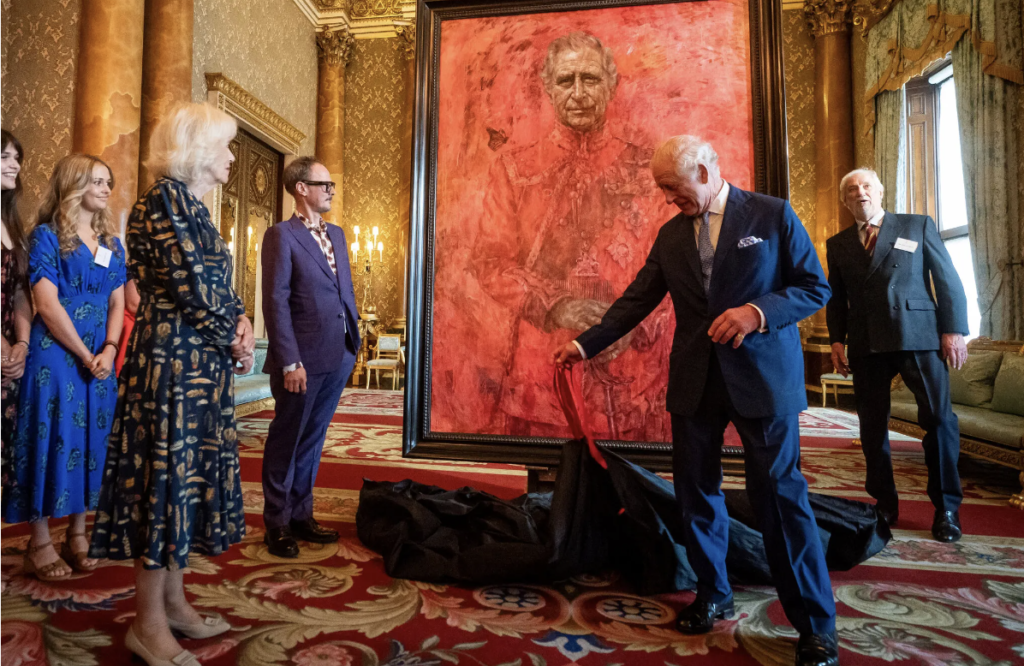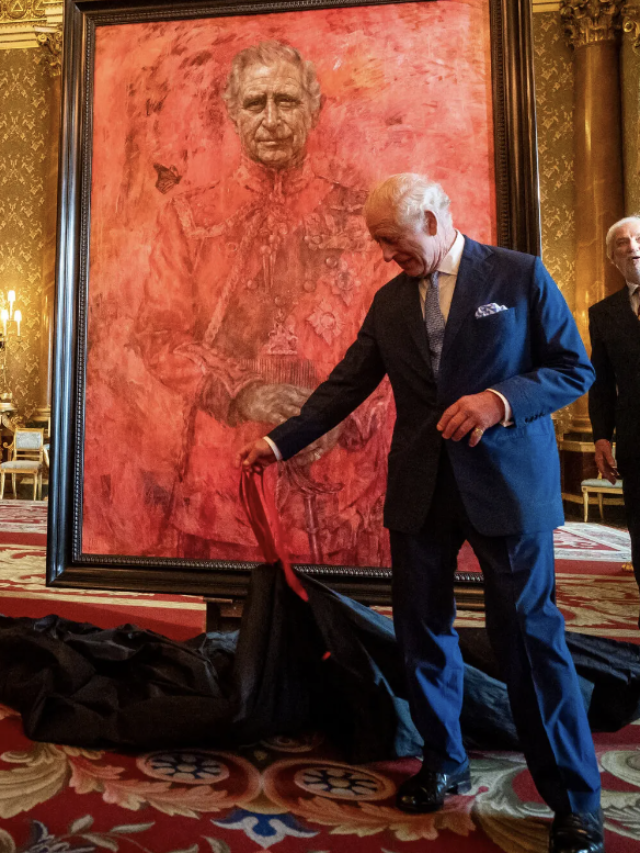The unveiling of the latest official portrait of King Charles III by artist Jonathan Yeo has sparked widespread controversy, with reactions ranging from interpretation to outright criticism.
The portrait, a sisable canvas measuring 7.5 feet by 5.5 feet, depicts the King standing proudly in his Welsh Guards uniform, with a subtle half-smile adorning his face. Notably, a butterfly hovers just over his right shoulder, symbolising his transformation from prince to sovereign and his commitment to environmental causes. However, it’s the dominant crimson background that has ignited a storm of interpretations and reactions.
Observers on social media wasted no time in offering their thoughts, with some likening the red backdrop to images of fire or blood, while others drew connections to historical conflicts and even referenced past scandals involving the royal family. The choice of color, it seems, has become a focal point for discussions surrounding the monarchy’s current challenges and controversies.
In an interview with the BBC, Yeo explained that the portrait aimed to present a more modern interpretation of the King, reflecting his desire for a contemporary monarchy. However, initial reactions from King Charles himself reportedly indicated surprise at the bold color choice, hinting at the potential for further discussion and debate.
The timing of the portrait’s unveiling adds another layer of significance, coinciding with ongoing tensions within the royal family, including Prince Harry’s recent memoir and allegations of royal racism, as well as the King’s own battle with cancer and speculation surrounding other family members’ health issues.
Queen Camilla, herself no stranger to public scrutiny, reportedly endorsed the portrait, suggesting that Yeo had captured the essence of the King.
Yeo’s previous works, which include more traditional portraits of members of the royal family, underscore the departure from convention represented by the King Charles III portrait. Like a previous controversial portrayal of Queen Elizabeth II in 1998, which drew accusations of decapitation from some quarters, Yeo’s latest work challenges traditional notions of royal portraiture.
The portrait is currently on display at the Philip Mould Gallery, where it is sure to continue generating discussion until its move to Drapers’ Hall in London. Its placement among other royal portraits in this historic setting will further underscore its significance as a reflection of both the monarch and the evolving nature of the monarchy itself.
Feature Image: King Charles III at the unveiling of the artist Jonathan Yeo’s portrait of the king on Tuesday. Courtesy: Aaron Chown/Pool photo, via Associated Press






